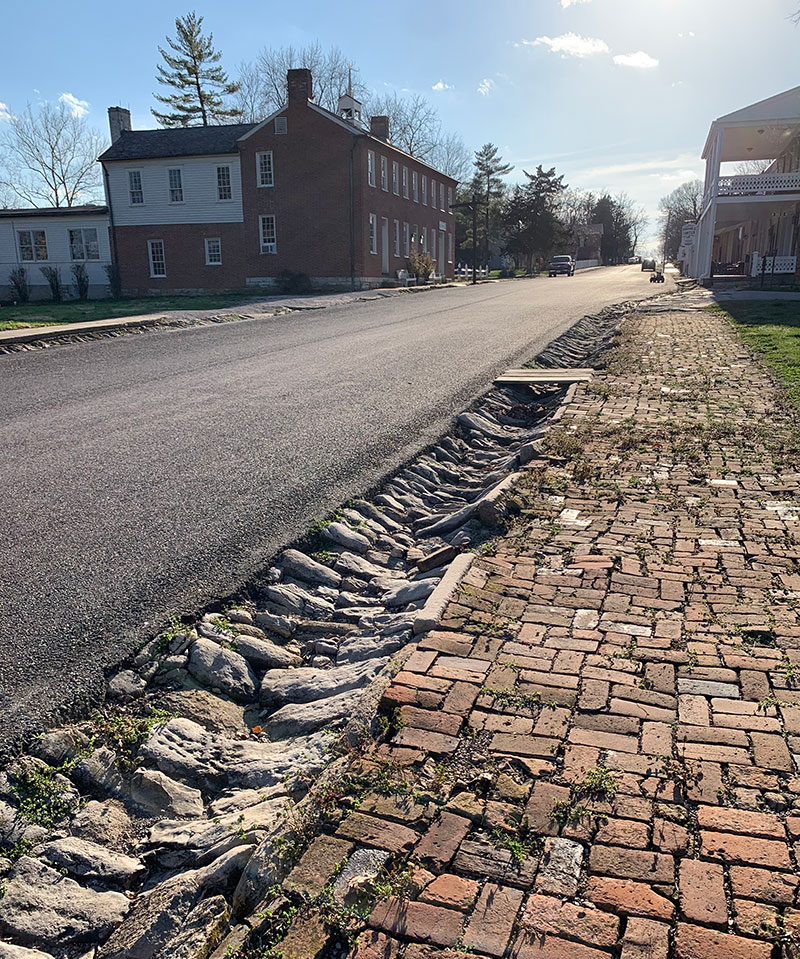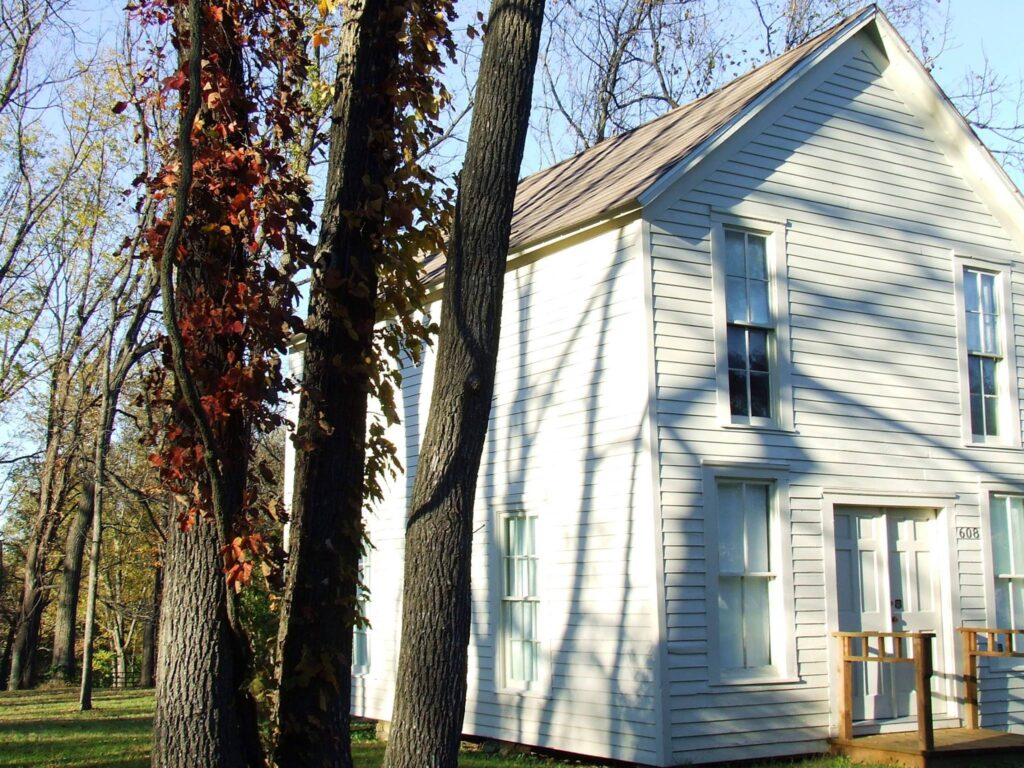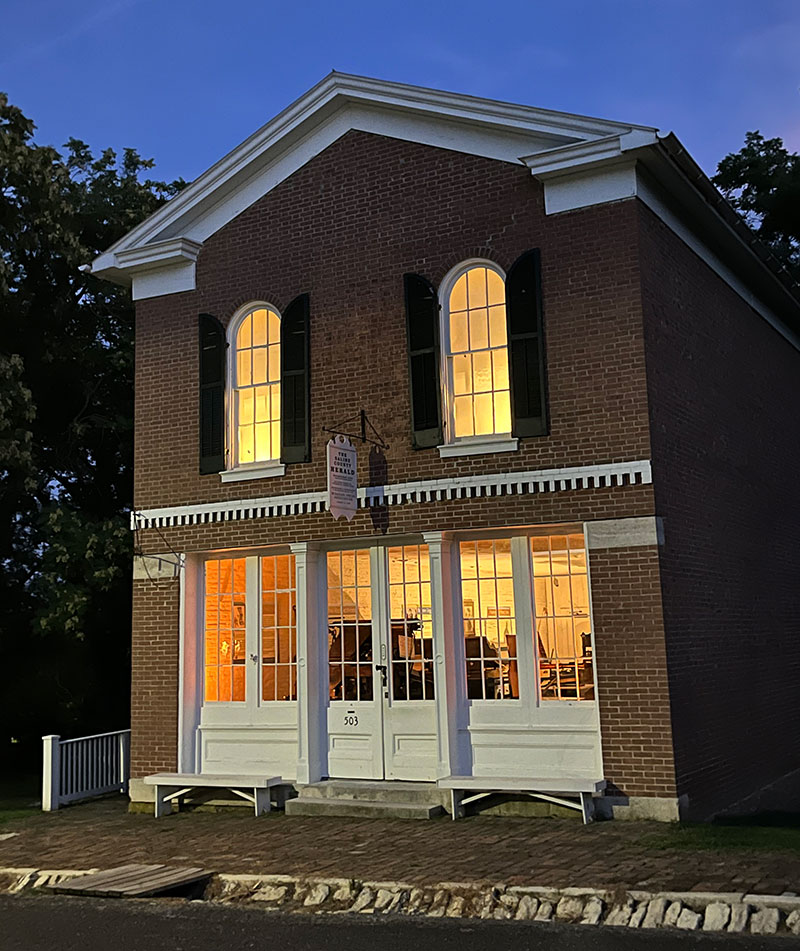The Active Care and Maintenance of a Place and Its Natural, Cultural, and Social Fabric
The idea of “Placekeeping” expressed in the following essay is core to the ideals that make Arrow Rock such a unique and attractive locale. Past Friends of Arrow Rock Executive Director Kathy Borgman says, “This reminds me of the goal of our Design Guidelines for changes and new construction, the responsibility of keeping within the character of Arrow Rock.” What do you consider to be the important elements in the uniqueness of Arrow Rock?

We live in a world of rapid and often disorienting change: shifting demo- graphics, new technologies, political polarization, instantaneous communication, changing consumer tastes, gentrification, extreme weather, and the global pandemic are all turning communities upside down. However, if I have learned anything over my 40 years in the community-planning arena, it is this: change is inevitable, but the destruction of community character and identity is not. Communities can grow without destroying the places and things people love.
Place is more than just a location or a spot on a map. A sense of place is a unique collection of qualities and characteristics – visual, cultural, natural, and social – that provide meaning to a location. Sense of place is what makes one location (e.g. your home- town) different from another location (e.g. my hometown), but sense of place is also that which makes our physical environment valuable and worth caring about.
Land use planners spend too much time focusing on numbers – the number of units per acre, the number of cars per hour, the number of floors per building – and not enough time focusing on the values, customs, characteristics, and quirks that make a place special and worth caring about.
Unfortunately, many American communities are suffering the social, economic, and environmental consequences that occur when a sense of place is lost. In response, planners, designers, and developers extoll the idea of “placemaking” – the concept of reimagining and reinventing public spaces. And without question, place- making has played a key role in revitalizing depressed communities and once-dead spaces like the High- line in New York or Millennium Park in Chicago, but at its essence, place- making is a micro-concept. In today’s rapidly changing world, we need to focus additional time and attention on the concept of “placekeeping.”
Placekeeping is the active care and maintenance of a place and its natural, cultural, and social fabric. This is a macro-concept. It is not just about pre- serving buildings and landscapes, but also about keeping the social memories associated with a place alive, while supporting the ability of local people to maintain their way of life.
Today, however, our communities and cultures are being homogenized out of existence. The subtle differences be- tween places are fading and larger regional differences hardly exist. Now if you were suddenly dropped along a road outside of most American cities and towns, you wouldn’t have the slightest idea where you were because it all looks exactly the same: the architectural styles, the building materials, the chain stores, the outdoor advertising, etc.
Today, building materials can be imported from anywhere. Hills can be flattened and streams put in culverts. We can transform the landscape with great speed and build anything that fits our budget or strikes our fancy. Technological innovation and the global economy make it easy for building plans drawn up at a corporate headquarters in New Jersey to be applied over and over again in Phoenix, Philadelphia, Portland, or a thousand other communities. Over the past 50 years, America’s built environment has progressed from unique to uni- form, from stylized to standardized.

Author Wallace Stegner once said, “If you don’t know where you are, you don’t know who you are.” We all need points of reference and orientation. A community’s unique identity pro- vides that orientation, while also adding social and economic value to a place. The more one community comes to look and feel just like every other place, the less reason there is to stay, to invest or to visit. Just consider tourism, for example: the more a community becomes just like every other community, the less reason there is to visit. On the other hand, the more a community does to preserve its distinctive identity, whether that is natural, cultural, or architectural, the more reasons there are to visit.
Similarly, when it comes to 21st century economic development, a key concept is “community differentiation.” In a global economy where capital is footloose, if you can’t differentiate your community or your development from any other, you’ll have no competitive advantage. Communities and regions are now in a global competition to attract and retain talented workers. Increasingly, these workers are choosing where they want to live first and then figuring out their job situations later. What’s more, research from the Sonoran Institute and others demonstrates that people are willing to sacrifice salary for the ideal community.
To foster a sense of place, communities must plan for built environments and settlement patterns that are uplifting and memorable and that foster a special feeling of belonging and stewardship by residents. A community also nurtures sense of place by understanding and respecting its natural context, such as rivers and streams, mountains and forests, native flora and fauna, scenic views and vistas along with community landmarks and traditions.
This is what “placekeeping” and by extension the historic preservation movement’s approach to community development is all about. It is about helping communities adapt to change while maintaining and enhancing what they value most. It is both a process and a philosophy. The process seeks to engage as many citizens as possible in planning for the future of their neighborhood or community, while also preserving what matters most. The philosophy recognizes that special places, characteristics, and customs have value. Placekeeping is about identifying and preserving the heart and soul of a place. As a wise man once said, “When a community takes the time to get to know itself, it gains a sense of identity and purpose that informs decisions about the future.”
Similarly, for me, placekeeping is about asking the question: “Do you want the unique character of your community to shape new development, or do you want new development to shape the character of your community?”

Finally, ask yourself this: why do you think so many people feel a sense of loss like losing a loved one or a friend when a historic building is demolished, a grove of trees cut down, a scenic view obliterated, or a beloved local store replaced by a national chain?
It is not because we can’t build new buildings, plant new trees, or continue to shop for the things we need, but because our sense of identity and well-being is tied in a very profound way to special buildings, places, views, and traditions.
These are the icons of our daily environment. These places and traditions are invested with rich symbolic importance that contribute to our identity and sense of belonging in a way no less fundamental than religion, language, or culture. In ancient Rome, there was a maxim that said that “cities should preserve the visible symbols of their identity to give citizens a sense of security in a dangerous world.” Two thousand years later, anthropologist Margaret Mead said almost the same thing when she declared that “the destruction of things that are familiar and important causes great anxiety in people.”
Economics and environmental quality aside, what we are often really trying to preserve is memory. It is an attempt to keep a mental grip on familiar and accustomed environments that make us feel comfortable and secure. The justification for preserving the uniqueness of place has as much to do with our need for psycho- logical stability and cultural continuity as it has to do with history, ecology, or economics.
The historic buildings, one-of-a-kind neighborhoods, and special landscapes of America are a resource to both the economy and the psychology of our country. We can grow without destroying more of the places that people love. The landscapes and special townscapes of America are worth preserving not just because they are fragile, beautiful, and valuable, but because they are emblematic of what makes America special.
Ed McMahon is Chairman Emeritus of Main Street America and the Senior Fellow for Sustainable Development and Charles E. Fraser Chair for Sustainable Development and Environmental Policy at the Urban Land Institute. He is recognized nationally as an inspiring and thought-provoking speaker and a leading authority on topics such as the links between health and the built environment, sustainable development, land conservation, smart growth, and historic preservation.
This article was originally published on mainstreet.org in January 2022 and was reprinted with permission.

